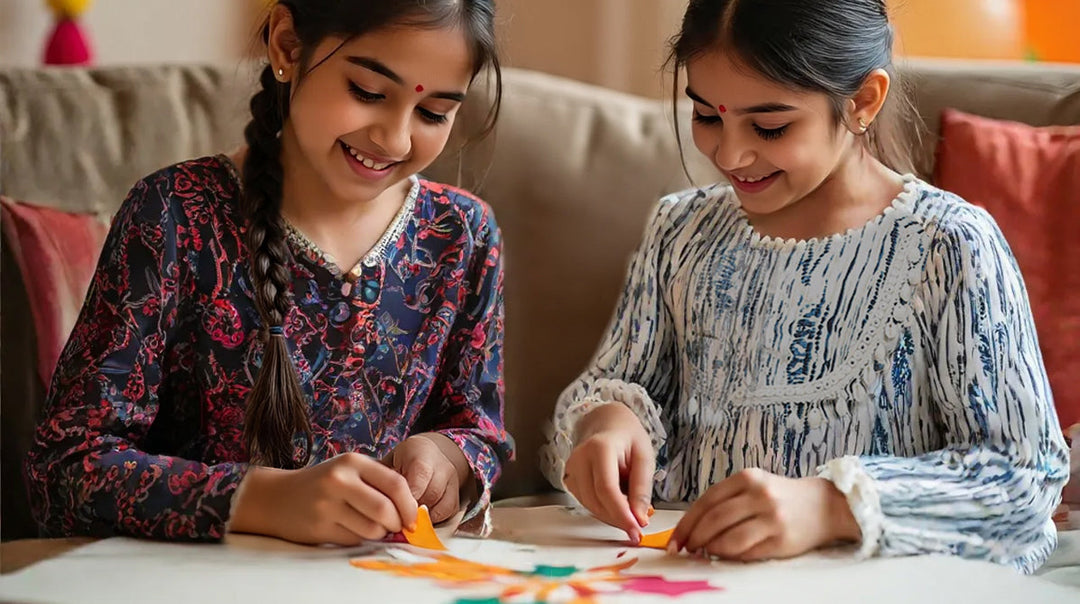13 Fun Science Experiments for Kids: Easy and Educational Activities

Science experiments for kids are commonplace nowadays in academic and institutional settings as part of a holistic curriculum that incorporates practical ways of learning. Outside of its immediate academic benefits including learning through applicability over rote memorization, it has many tangential benefits which influence kids in numerous ways.
Why Science Experiments Are Great for Kids
Science experiments help children develop their analytical skills and become good at reasoning for themselves. By helping in general cognition, this sort of learning facilitates self-confidence, creativity, ingenuity, and observation.
It has been noted that curiosity is a great motivator for learning. Science experiments stimulate and probe a child’s mind beyond the classroom, which primes them for self-learning and collecting knowledge for its own sake. Involvement in such activities boosts esteem as children will see their own inference, classification, comparison and problem-solving approaches improve. This adaptability improves the generation of original and novel ideas and is not only helpful in the sciences but also in the humanities, setting children up for a wide variety of disciplines.
Beyond these, science experiments help in holistic development. Physically, it improves gross motor skills- like hand-eye coordination and nimbleness. It enhances social skills and introduces teamwork. As science requires meticulousness, these sorts of experiments make children patient. Patience is a cornerstone of maturity. Hence, science experiments are important for children to engage in!
Simple Science Experiments for Kids to Try at Home
Experiments for kids should be a balance of ease and challenge. They need to be simple enough that kids follow through but hard enough to be personally fulfilling and rewarding when completed. Some experiments that are unique, will hold a child’s interest and engage their curiosity are as follows:

DIY Compass
Materials needed: Pliers, Sewing Needle, Magnets, Cork, Bowl, Water
Step-by-Step instructions:
- First, stroke the needle 50 times with one side of a magnet. This will magnetize it.
- Flip the needle along with the magnet, followed by stroking the other end with the opposite side of the magnet.
- Cut a cork, making it 1-2 cm thick.
- Use a thumb tack to create a hole in the cork’s center.
- Push a needle through the cork with the pliers.
- Once the needle is centered in the cork, fill a bowl with some water.
- You can place the cork and needle in the water to see it align and point North!
Science explanation
When you rub a needle with a magnet, it becomes magnetized. This means the needle itself is now working as a small magnet with a North and South Pole.
The Earth too is like a big magnet. It has its own North and South Pole. When the magnetized needle is placed in the cork and floated in water, it can move freely. When you rub the needle with the magnet, it becomes magnetized. This means the needle itself starts acting like a small magnet with a North and South Pole. will naturally align itself with the Earth's magnetic field, with one end pointing towards the Earth's North Pole.
This is how a compass works: the needle always points North, helping you find your direction.
Ref - https://www.steampoweredfamily.com/how-to-make-a-compass/
Bubble Science Experiment

Materials needed: For Bubble Solution: 1 cup warm water, ¼ cup dishwashing detergent, 1 tablespoon glycerin, container
For experiment: Straw, surface that can be made wet, Bottled Water, Spray bottle
Step-by-step instructions:
- Prepare the bubble solution. To do this, mix warm water, clear dishwashing detergent, and glycerin, and pour it into a container.
- Now, attempt to blow a bubble on a dry surface. You’ll see how quickly it pops.
- Spray the dry surface liberally with some water.
- Dip the straw into the bubble solution and blow a bubble near the wet surface; see that it remains unpopped.
- Experiment by blowing a bubble inside another bubble. You can do this by using more solutions on the straw.
- If you touch the bubble with a dry finger (it pops) and with a wet finger (it doesn't pop).
Science explanation
When a bubble is blown on a dry surface, its water quickly evaporates. This leaves behind a fragile soap skin that bursts easily. Now, if you spray the table with water first, it gives the bubble a cool, refreshing mist. Now the bubble is strong and able to float longer without popping.
By adding more bubble solution and blowing gently, you can create a small bubble inside a bigger one. The bigger bubble protects the smaller one, so they both can float. Touching the bubble with a dry finger removes the protective water layer and makes it burst. A wet finger preserves water content, so the bubble won’t pop.
Ref - https://www.hellowonderful.co/post/awesome-bubble-science-experiment-with-kids/
Self-inflating Balloon

Materials needed: Vinegar, Small Balloon. Funnel, 1 Teaspoon Baking Soda, Bottle
Step-by-step instructions:
- Hold the bottle upright and steady, take someone’s help if needed. Fill half of it with vinegar.
- Stretch the balloon.
- Using the funnel, deftly pour baking soda into the balloon. It should settle at the bottom of the balloon.
- Now, stretch the balloon's opening over the mouth of the bottle.
- Lift the balloon a bit. The baking soda should fall into the vinegar. You might need to shake it gently so the baking soda reacts.
- Now, watch the balloon inflate!
Science explanation:
Vinegar is like a tangy liquid and baking soda is a powdery substance. When they meet, they create a cool chemical reaction. It creates a gas called carbon dioxide, which fills up the balloon as it takes up space. Thus, the balloon inflates, just like it does when you blow air into it!
Ref - https://www.education.com/science-fair/article/Self-Inflating-Balloon
Colorful Rainbow Cabbage

Materials needed: Cabbage, Glasses, Jar, Food Coloring, Spoon, Paper Towel
Step-by-step instructions:
- Fill each glass one-third full with cold water, depending on how many colors of cabbage you want to make.
- Add substantial food coloring to each glass. Stir until the color mixes into the water.
- Place one cabbage leaf into each glass.
- Let the glasses sit for a few days and observe the changes.
- You’ll notice how the cabbage leaves begin to change color over time, when they absorb the colored water.
Science explanation
Just like how humans use our throats to drink water, cabbages have tiny tubes inside them to carry water from the roots to the leaves. When you place cabbage leaves in colored water, they soak up the water along with the color from the food coloring, using their roots. This color travels up their tubes and makes the cabbages colorful as the colors start to spread through the leaves. It's like the cabbage is drinking the colored water!
Ref - https://www.growingajeweledrose.com/2019/02/rainbow-cabbage-experiment.html
Jumping Leaves Experiment
Materials needed: Balloon, Tissue Paper, Scissors, Sweater
Step-by-step instructions:
- Using the scissors, cut the tissue into different types of leaves.
- Inflate the balloon and rub it against your hair or a sweater.
- Hold the balloon over the tissue leaves.
- Watch as the leaves will jump up!
Science explanation
When the balloon is rubbed against a sweater or human hair, it picks up something called static electricity. Static electricity is like magic sparks that make things stick or move when you rub them together. So, this electricity pulls the leaves up to the balloon. This shows how electricity can attract things towards itself without moving directly.
Ref - https://www.science-sparks.com/jumping-leaves-static-electricity/
Invisible Ink

Materials needed: Water, Baking Soda, Paintbrush, ½ cup rubbing alcohol, 1 teaspoon turmeric, Paper towels
Step-by-step instructions:
- First, mix the baking soda into half a cup of water. This will create invisible ink.
- Make sure to stir the baking soda thoroughly so it dissolves.
- Use paintbrushes to draw a picture or write a secret message. Dip the paintbrush into the invisible ink.
- Mix 1 teaspoon of turmeric with half a cup of rubbing alcohol. This makes the color-changing solution.
- Stir the turmeric so it combines completely.
- Now use the paper towel or a paintbrush to gently apply the color-changing solution onto the paper. Your secret picture or drawing will appear!
Science explanation
The invisible ink is made by mixing baking soda with water. This creates a basic (alkaline) solution. Hence, when you write with this ink on paper, it stays invisible because paper doesn’t react to it.
The turmeric and alcohol create a yellow-orange solution. Turmeric contains a compound called curcumin, which changes color based on the alkalinity of its environment. When you apply the turmeric-alcohol solution to the paper with the invisible ink, the alkaline baking soda in the ink reacts with the curcumin in the turmeric. This changes its color and hence the message is visible!
Ref - https://www.sciencebuddies.org/stem-activities/invisible-ink
Floating Egg

Materials needed: Jar, Warm Water, Egg, Salt, Spoon
Step-by-step instructions:
- First, fill the jar halfway with water. If you put the egg in it, it’ll sink.
- Now, remove the egg. Add salt to the water until it no longer dissolves when mixed.
- Put the egg in this salt water.
- Watch the egg float!
Science explanation
Heavy or dense things sink in water. So, normally, when you put an egg in plain water, it sinks because the egg is denser than water. However, when salt is added to the water, the water becomes heavier or more dense. If you keep adding salt till it no longer dissolves, the water will become so dense that the egg is now lighter. Then it will float.
Ref - https://www.kiwico.com/diy/stem/quick-easy-experiments/floating-egg
Lava Lamp

Materials needed: Plastic Bottle, Water, Vegetable Oil, Fizzing Tablet, Food Coloring
Step-by-step instructions:
- Fill ¼ of the bottle with water.
- Pour the vegetable oil into the bottle until it is full, then wait for the oil and water to visibly separate.
- Add a few drops of the food coloring into the bottle.
- Break your fizzy tablet in half. Put it into the bottle.
- You’ll see the lava lamp effect: colorful blobs rising and falling within the bottle!
Science explanation
Oil floats on top of water as it is lighter than water. They do not mix. The food coloring mixes with the water below. When the fizzy tablet is added, it sinks and begins to dissolve. This creates carbon dioxide gas. This gas bubbles up through the oil, carrying the colored water with it to the top of the bottle. This is what creates the lava lamp effect!
Ref - https://www.homesciencetools.com/article/how-to-make-a-homemade-lava-lamp-science-project/
Kaleidoscope

Materials needed: Empty cylindrical chip can spray adhesive, construction paper, hammer, nail, colorful tissue paper, glue, aluminum foil, glitter, or sequins
Step-by-step instructions:
- Spray adhesive on construction paper. Decorate with glitter or sequins evenly.
- Roll the paper with the glitter side inwards. Then, insert it inside the chip can.
- Secure with glue if required. Trim the excess. Cut a piece of aluminum foil to fit inside the can, covering the bottom completely.
- Now, you can use a hammer and nail to punch a hole in the center of the can's bottom and decorate using glue, sequins, and paper.
- Place the lid on the can and twist to enjoy the kaleidoscope's changing patterns.
Science explanation
This can be explained by the phenomenon of reflecting light. Light normally travels straight. When light hits something shiny like a mirror or foil, it bounces off at different angles. This is what creates the colorful patterns seen when you twist the kaleidoscope.
Ref - https://www.sciencebuddies.org/science-fair-projects/project-ideas/Phys_p095/physics/kaleidoscope-science
Sundial

Materials needed: Posterboard, Paper Plate, Clay, Stick or Pencil, Marker
Step-by-step instructions:
- Roll the clay into a ball, stick a pencil in the center, and put it on a paper plate.
- Take everything outside to a sunny spot. Place on a large poster board. Put the paper plate in the middle and draw its outline on the board.
- Secure the board’s corners so it doesn’t move.
- Start marking time at the top of the hour, like for example 10:00 AM. You can do this by drawing a line where the shadow falls and writing the time beside it.
- Check the shadow's position every hour. Each time you check, mark the new shadow position, with the time.
- At the end of the day, your board will show the hours like a clock. The shadow positions will track time.
Science explanation
The Earth rotates on its axis. This causes the sun to appear like it is moving across the sky from east to west in the daytime. A sundial operates on this principle, and it is how people used to tell time before clocks were invented. When the sun shines on the stick (or pencil) placed in the playdough ball, it creates a shadow that moves as the sun changes position in the sky. So, when you mark the shadow’s position at different times, you are tracking time, like a clock!
Ref - https://happybrownhouse.com/how-to-make-a-sundial-with-children/
Instant Ice

Materials needed: Bottled water, Glass bowl, Tray, Ice cubes, Freezer
Step-by-step instructions
- Put water bottles in the freezer for two hours or more.
- Remove them before they completely freeze.
- Place the glass bowl on top of a tray or flat surface to catch the water.
- Place ice cubes on it.
- Slowly pour water on it.
- Watch as ice forms instantly!
Science explanation
When you put water in the freezer, it gets really cold, but it doesn’t turn into ice immediately. Before it turns to ice, we remove it, and this forms supercooled water. Supercooled water is colder than 0 degrees Celsius, the temperature where water normally freezes. When you pour this supercooled water over ice cubes, those ice cubes help the water start to freeze really quickly. This forms instant ice!
Ref - https://onlypassionatecuriosity.com/instant-ice-science-experiment-for-kids/
Dancing Raisins

Materials needed: Unopened soda, Raisins, Glass
Step-by-step instructions
- Fill the glass with soda.
- Drop raisins into the glass.
- Wait for a while, they’ll start dancing!
Science explanation
Carbon dioxide is a gas. It is invisible, like air, but is present all around us. When you open a soda bottle, you hear a fizz sound. This is because carbon dioxide gas that's been pushed into the soda is being released and coming out of the liquid in tiny bubbles.
It is this gas only which causes the raisins to dance. The bubbles make the gas stick to the raisins because they have a rough surface. This makes them able to float up in the soda. When the bubbles reach the top of the soda and pop, the raisins sink back down. This makes it look like they’re dancing due to the up-down motion.
Ref - https://funlearningforkids.com/dancing-raisins-science-experiment-kids/
Magic Color Milk

Materials needed: Milk, food coloring, cotton swabs, dish soap, shallow dish or plate
Step-by-step instructions:
- Pour the milk onto the shallow dish or plate.
- Add the food coloring around the milk surface.
- Dip the cotton swab into the dish soap.
- Now, touch the milk with the cotton swab where the food coloring is.
- Observe as it swirls on its own!
Science explanation
Milk has fats and proteins. This creates tension on the surface of the milk. As you add dish soap, the surface tension lowers and the colors spread and mix! So this experiment simply shows how soap affects liquids and how different substances interact with each other!
Ref - https://www.livinglifeandlearning.com/cool-magic-milk-experiment-you-have-to-try.html
These easy science experiments are perfect for your kid to hone an interest in the subject and make them curious and creative in their pursuit of knowledge. Just as experiments are good for stimulating a child’s curious, imaginative brain, the clothes they wear should reflect their imaginative spree. Simple yet innovative designs and comfort are at the intersection of what kids’ clothing should be when kids need to freely explore, whether on the playground or when exploring science.
Spunkies is perfect for this: these designs capture your child's inner spirit. Our clothes, which are affordably priced, are made to last. We compromise on neither quality nor comfort and take great pride in how we control the manufacturing process. Our items are stitched, dyed, and embroidered entirely in-house. So whether your kid is experimenting or just spending time being a kid, he or she is guaranteed to enjoy wearing our items!






